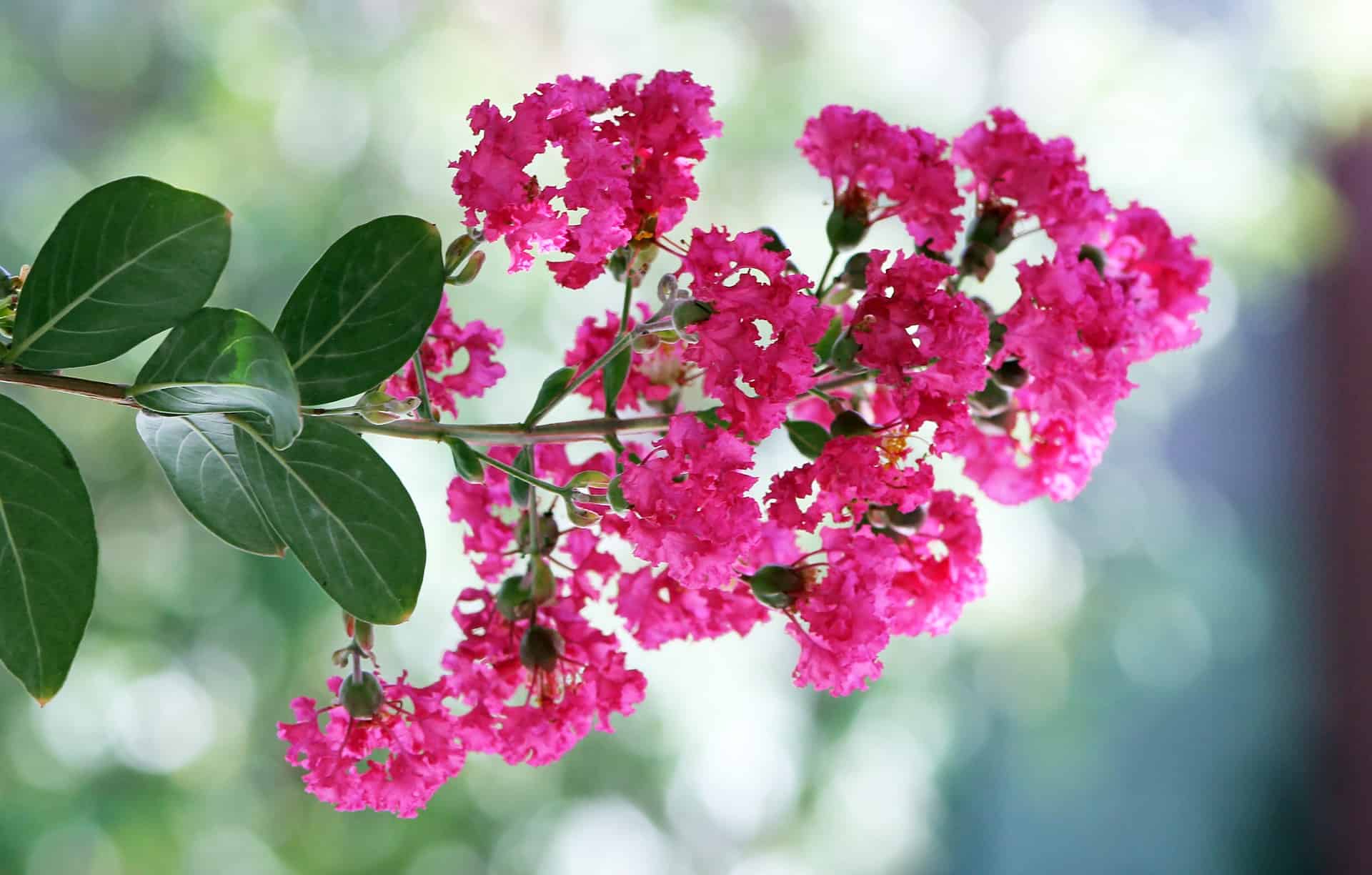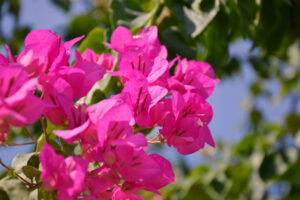On this page, you’ll find a list of the Best fertilizer for Crepe Myrtles, along with some helpful tips on how to care for Crepe Myrtles.
Crepe Myrtles are beautiful trees that add a touch of color to any landscape. However, sometimes they can have trouble blooming in nutrient-poor soil. That’s why it’s a good idea to apply a high-phosphorus fertilizer early in the season if you want to encourage your Crepe Myrtle trees to produce more flowers.
Best Fertilizer for Crepe Myrtles
| Image | Name | Rating | Shop |
|---|---|---|---|
 | Crape Myrtle Food Granular Fertilizer NutriStar | ||
 | Crepe Myrtle Plant Food 24oz 8-55-7 | ||
 | FoxFarm Happy Frog Acid Loving Plants | ||
 | Dr. Earth Organic Acid Fertilizer |
Best Fertilizer for Crepe Myrtles
Crape Myrtle Food Granular Fertilizer NutriStar
Crape Myrtle Food Granular Fertilizer by NutriStar (Buy Online) is the best fertilizer for Crepe Myrtles. This specially formulated fertilizer has a 10-15-9 NPK ratio, and it also contains a balanced blend of micronutrients. There is also additional sulfur in this fertilizer that will help lower the pH of your soil, which is essential for acid-loving plants like Crepe Myrtles
Crepe Myrtle Plant Food 24oz 8-55-7
Carl Pool Crepe Myrtle Plant Food (Buy Online) is the best fertilizer for Crepe Myrtle trees that are having trouble blooming. This 8-55-7 fertilizer (NPK) is an excellent source of primary, secondary, and trace nutrients,
Carl Pool Crepe Myrtle Plant Food contains more phosphorus than standard fertilizers. Phosphorus is a very important nutrient for Crepe Myrtle trees since it plays an important role in flower development.
If your soil is deficient in phosphorus then you’ll want to use a high-phosphorus fertilizer. Just be sure to test your soil first with a Soil Test Kit, so you can figure out how much phosphorus you’ll need to apply to your soil.
Crepe Myrtle Fertilizer Spikes
Jobe’s GL61100046769 Tree & Shrub Fertilizer Spikes
Jobe’s Tree & Shrub Fertilizer Spikes (Buy Online) are the best Crepe Myrtle fertilizer spikes if you have a large stand of Crepe Myrtles. These fertilizer spikes have a 15-3-3 NPK ratio, and they are specially designed to slowly release a steady supply of nutrients into the soil around the dripline of a tree.
A.M. Leonard Tree Food Stakes for Trees and Shrubs
A.M. Leonard Tree Food Stakes (Buy Online) is a good Crepe Myrtle Fertilizer spike if you’re having trouble getting your trees to bloom. These fertilizer spikes have a 15-7-6 NPK ratio, and each spike is about 1-inch wide, and 8-inches long. These fertilizer spikes are a better source of phosphorus than Jobe’s Tree & Shrub fertilizer spikes, which makes them better suited for use in phosphorus depleted soils.
Crepe Myrtle Bloom Booster
Triple Super Phosphate 0-46-0 Easy Peasy Plants 99% pure (10lb)
Triple Super Phosphate (Buy Online) is a great source of fast-acting phosphorus for Crepe Myrtles. This granular phosphorus is easy to spread around the base of your plants, and it’s highly concentrated, so you’ll only need to apply 1 cup per 100 square feet. And best of all Triple Super Phosphate is one of the most economical sources of phosphorus on the market.
Burpee Organic Bone Meal Fertilizer, 3 lb (1 Pack)
Burpee Organic Bone Meal (Buy Online) is an excellent source of organic fertilizer for Crepe Myrtle Trees. This Bone Meal has a 6-8-0 NPK ratio, and it’s also a very good source of calcium. If you’re looking for a safe all-natural bloom booster for your Crepe Myrtles then you should definitely give Burpee Organic Bone Meal a try.
What is the Best Fertilizer for Crape Myrtles
When you’re feeding crepe myrtles throughout the year you can use a general-purpose fertilizer with a 10-10-10 NPK ratio. However, if you want to promote vigorous flower development then you should use a high-phosphorus 8-55-7 fertilizer.
Are Crepe Myrtles Acid Loving?
Crepe Myrtles are acid-loving plants that need to grow in low pH soil. If your soil is alkaline pH > 7.0 then you’ll need to use a fertilizer that will help lower the pH of your soil.
Fertilizer for Acid Loving Plants
You can use FoxFarm Happy Frog Acid (Buy Online) to lower soil pH or any other fertilizer that’s made for acid-loving plants.
How to Fertilize Crepe Myrtle
Step 1
The best fertilizer for Crepe Myrtles is a low-nitrogen, time-released, granular high-phosphorous fertilizer,. You want to sprinkle a balanced fertilizer around the base of your Crepe Myrtle Trees in early spring. You might also want to apply another dose of high-phosphorous fertilizer to enhance flower production in late spring or early summer.
Step 2
After you apply the fertilizer it’s a good idea to water around the roots of the plants applying at least 1-2-inches of water to soak in and release the fertilizer into the soil.
Step 3
Then if you plan on deadheading your Crepe Myrtle trees to promote a second bloom you can apply another small dose of fertilizer in mid to late summer.
When Do Crepe Myrtles Bloom
Most Crepe Myrtles start to bloom in early to mid-summer, and they will continue to bloom until the start of fall. Some late blooming Crepe Myrtle varieties will start to bloom in mid-summer, and their blooms can sometimes last until the first frost.
Crepe Myrtle Not Blooming
Why is my crepe myrtle tree not blooming? If you’re Crepe Myrtle isn’t blooming it could be related to a nutrient deficiency, overcrowded branches, lack of light, or improper pruning.
Why is My Crepe Myrtle Not Growing
A Crepe Myrtle might stop growing for a number of reasons such as a lack of nutrients, light, water, or a disease. A lack of nutrients can easily be solved with a dose of Crepe Myrtle Plant Food (Buy Online).
If a Crepe Myrtle isn’t getting enough light this can also stunt its growth. Make sure there are no other trees that are blocking light from reaching your Crepe Myrtle. Also, you want to avoid planting a Crepe Myrtle on the north side of a building, or in the shadow of a large structure.
Crepe Myrtles can also stop growing if they aren’t getting enough water. If you think that might be the case try watering your Crepe Myrtle with a soaker hose made for trees to deliver moisture right to their root system.
Are Coffee Grounds Good for Crepe Myrtles
Coffee grounds are good for Crepe Myrtles if you need to acidify your soil. They also will break down and release key nutrients like nitrogen, which is essential for a plant’s growth and development. Coffee grounds are also a great way to add organic carbon to the soil, which can help improve moisture retention and nutrient absorption.
Is Holly-Tone Good for Crape Myrtles
Yes, Holly-Tone is good for Crepe Myrtles if you live in an area with alkaline soil pH > 7.0. Holly-Tone (Buy Online) has been specially formulated for acid-loving plants, and it quickly lowers the pH of alkaline soil. It also is a good source of nutrients since it has a 5-3-3 NPK ratio, and it also contains Bio-Tone, which is a custom blend of beneficial soil microbes.
How To Make Crepe Myrtles Bloom Again
You can encourage Crepe Myrtles to bloom again with carefully timed deadheading. In most cases, early-blooming varieties need to be deadheaded by early July in order to allow enough time for them to flower before the end of the growing season.
Late bloomers shouldn’t be deadheaded since they might get damaged by cold weather, and in most cases, they won’t have enough time before the season ends to produce new flowers.
How To Deadhead Crepe Myrtles
To deadhead Crepe Myrtles, all you need to do is cut off the old flowers once they begin to fade.
PRUNING TIP: When you remove the flowers make sure not to damage any new buds or strip the bark when you cut off the flowers.
Why is My Crepe Myrtle Not Leafing Out
If you’re Crepe Myrtle is not leafing out then its leaf buds might have been damaged. One of the primary causes of this is a late frost that killed the delicate cells in the newly formed leaf buds.
If you’re Crepe Myrtle hasn’t leafed out you’ll want to check the buds for damage. Remove a leaf bud and slice it in half. Then check inside for any signs of discoloration. If the leaf bud is brown inside and green on the outside then it has most likely suffered frost damage.
Otherwise, if the leaf bud is brown all the way through then the tree might be suffering from a pest or disease problem.














